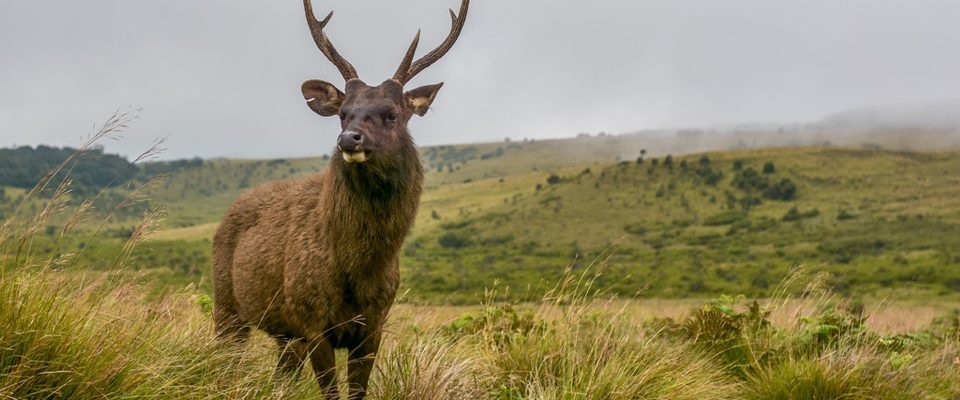Protected Areas
Protected areas of Sri Lanka play a vital role in biodiversity Conservation. Shrinking and disappearance of habitats due to the rapid growth of human population, development projects and urbanization, some species are being pushed into the threatened status. Human intervention is prohibited or limited inside the protected areas. Therefore these areas act as refuges for species by providing ideal habitat to ensure their survival. Protected areas protect ecosystem services and cultural and historical significance areas. In addition to that these areas are reference areas for monitoring of changes in outside due to the human impact. Protected areas are administrated by Department of Wildlife Conservation and Forest Department in Sri Lanka.
Protected Areas Administrated by Department of Wildlife Conservation
Fauna & Flora Protection Ordinance provides legal framework for protection and conservation of the fauna and flora of Sri Lanka and their habitats. 8 categories of protected areas (National Reserves and Sanctuaries) in Sri Lanka, constituted under the Fauna & Flora Protection
Ordinance.
This classification reflects the definitions provided by internationally recognized IUCN protected area management categories as global stands for defining and recording protected areas. There were 8 categories of protected areas until 1993, classified according to the management objectives. The category of “refuge” was removed and “Marine National Park” was added by
amending Fauna and Flora Protection Ordinance in 2009. In addition to that new concept was added along with the sanctuary as “Sanctuary or a Managed Elephant Reserve”. However the protected areas net work still comprise with Strict Natural Reserve, National Park, Marine National Park, Nature Reserve, Jungle corridor and Sanctuary which cover 1,258,997.55 ha (19.25 %) of land area of the country.
Classification of Protected Areas according to Fauna and Flora Protection Ordinance
- Strict Natural Reserve – 03
- National Park – 25
- Nature Reserve – 09
- Jungle Corridor – 02
- Marine National Park – 01
- Marine Reserves – 00
- Buffer zone – 00
- Sanctuary or a Managed Elephant Reserve – 68 +1
Strict Natural Reserve (SNR)
Three (03) Strict Natural Reserves have been declared under the provisions of Fauna & Flora Protection Ordinance. (Haggala, Yala and Ritigala). As 1a of IUCN protected area category (Strict Nature Reserve), human visitation, use and impacts are strictly controlled and limited in these areas to ensure protection of the conservation values. These areas are reference areas for monitoring of changes in outside due to the human impact and create unique habitats for endemic species (Point endemic). Entering into the SNR is prohibited but it is not restricted for the purpose of discharging any official duty or authorized scientific research. Both purposes can be deployed along with the permission of the Director General of Department of Wildlife Conservation.
National Park
Twenty Eight (25) National Parks have scattered throughout the country by providing scientific, educational, recreational and aesthetic opportunities to visitors. These areas are declared under the provisions of Fauna and Flora Protection Ordinance. Visitors are allowed to enter the national park with permits in accordance with the conditions, issued by prescribed officer of Department of Wildlife Conservation on the payment of the prescribed fee. Yala and Wilpattuwa are the older National Parks of the country. Yala, Wilpattu, Horton plains and Udawalawa are the most visited national parks of the country. National parks such as Maduruoya, Udawalawa and Galoya were declared for the purposes of protection of catchment areas and to provide habitats for displaced animals due to the huge irrigation projects. Definition of National park is compatible with the category II of protected areas introduced by IUCN.
Nature Reserve
Nine (9) areas of state lands of the country have been declared as nature reserves under the provisions of the Fauna & Flora Protection Ordinance to preserve their natural conditions. Entering without a permit or carried out any harmful activity inside a nature reserve is prohibited. Therefore human influence has minimized in these areas and allowed to retain their natural characters as protected area category 1b of IUCN ( Wilderness Area).
Jungle Corridor
Today we face severe problems due to the habitat fragmentation. Therefore declaration of jungle corridors are good solution to facilitate movements of animals between protected areas. Also it is very important to reduce inbreeding depression of a population and thereby contribute to stable the population. Two (02) jungle corridors were declared under the provisions of Fauna and Flora Protection Ordinance so far. (Kavuulla – Minneriya and Nelugala)
Marine National Park
Legal provisions of a Marine National Park are almost similar to National park declared under the Fauna and Flora Protection Ordinance. Visitors are allowed to enter marine national parks for the purpose of observing and studying the fauna and flora. But any activity that has been carried out by a law or custom or usage, or traditional practice before establishment of the Marine National Park are allowed by imposing conditions. Adam’s bridge was declared as the 1st Marine National Park in Sri Lanka under the provisions of Fauna and Flora Protection Ordinance.
Marine Reserves
Marine reserve is a kind of marine protected area that has not been declared so far, under the provisions of the Fauna and Flora Protection ordinance.
Buffer zone
Buffer zone has to be comprised with state owned lands; extend from the outer border of the national park. It provides better protection and minimized the human influence on National Park. No buffer zone has been declared so far. However the human influence on national park has curtailed, according the section 9A of Fauna and flora Protection Ordinance.
Sanctuary or a Managed Elephant Reserve
An area declared to be a sanctuary or managed elephant reserve may include both state land and other than state lands. Some activities have been prohibited even in a private land within a sanctuary. 68 sanctuaries including 1 Manage Elephant Reserve have been declared so far.

